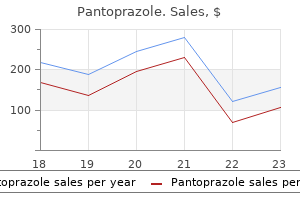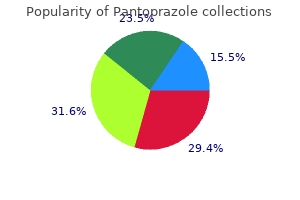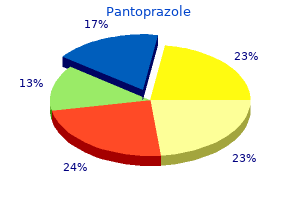Lesley H. Curtis, PhD
- Professor in Population Health Sciences
- Professor in Medicine
- Interim Executive Director, Duke Clinical Research Institute
- Chair in the Department of Population Health Sciences
- Member in the Duke Clinical Research Institute
- Executive Core Faculty Member, Duke-Margolis Center for Health Policy

https://medicine.duke.edu/faculty/lesley-h-curtis-phd
Pantoprazole dosages: 40 mg, 20 mg
Pantoprazole packs: 60 pills, 90 pills, 120 pills, 180 pills, 270 pills, 360 pills

Buy generic pantoprazole 20 mg line
These embody total dose, overall time of administration, measurement of each fraction of irradiation, variety of fractions per irradiation, patient age, and survival time of patients. Diffuse late radiation injury takes the form of severe demyelination, notably in periventricular and posterior centrum semiovale regions. Gradual ventricular enlargement is often a sign of white matter volume loss, although it could be troublesome to distinguish from speaking hydrocephalus. Radiation-induced telangiectasias and cavernous malformations have been reported as late phenomena after remedy. They are characterized by hemosiderin deposition (low in sign intensity on T2-weighted and gradient-echo images) without surrounding edema. Tumor Progression versus Pseudoprogression In sufferers with high-grade gliomas, present normal treatment consists of irradiation and temozolomide chemotherapy. A transient improve in enhancement, edema, and mass impact develops in roughly 20% to 30% of sufferers, occurring mostly inside 3 months after radiation therapy ends. Although a bubbly appearance with high depth on T2-weighted imaging within areas of enhancement has been described as indicators of radionecrosis, these findings have restricted specificity. In the posttreatment setting, imaging can help decide therapy response and determine tumor progression/ recurrence, though one must be cautious of the similarities and differences between tumor and treatment-induced adjustments on imaging. Clinical options, mechanisms, and administration of pseudoprogression in malignant gliomas. The evolution of scientific practical imaging in the course of the previous 2 a long time and its present impact on neurosurgical planning. Dynamic susceptibility contrast perfusion weighted imaging in grading of nonenhancing astrocytomas. Outcome prediction in sufferers with glioblastoma by utilizing imaging, medical, and genomic biomarkers: focus on the nonenhancing component of the tumor.

Order pantoprazole 20 mg fast delivery
Frameless stereotactic methods have revolutionized neurosurgery by providing a simple, intuitive, and correct technique for intracranial navigation. Monitoring the extent of tumor resection all through the operation may help to prevent inadvertent resection of regular brain tissue. Therefore, integrating intraoperative feedback provided by frameless stereotaxis with typical techniques (including visual inspection) is best to assess the extent of resection, measurement of the tumor cavity, and identification of normal adjacent constructions. A, In this 40-year-old man with generalized seizure and normal neurological examination, craniotomy and resection of the left frontal tumor was the process of alternative, with a predicted complication price of 5%. B, In this 65-year-old man with progressive right-sided weakness over 6 weeks, enhancing tumor was seen within the left motor cortex. With a predicted 25% complication price for open resection, stereotactic biopsy was beneficial. B and C, Diffusion tensor imaging displaying that the tumor was abutting the arcuate fasciculus (green). Given that it additionally significantly increases the size and cost of surgical procedure,16 more high-quality research are needed to define the actual advantages of those emerging applied sciences. A B BrainEdema Another frequent complication associated with neurological morbidity is brain edema, which in its excessive type can end result in herniation and demise. Factors that contribute to postoperative edema embody extreme brain retraction and subtotal resection of malignant tumors, particularly glioblastomas. Edema brought on by extreme brain retraction may be minimized by correct affected person positioning, hyperventilation, high-dose corticosteroids, diuretics, and intermittent retractor launch. Although frameless stereotaxis may help decide the optimal surgical trajectory and scale back the need for extended retraction, hyperventilation and diuretics are sometimes omitted throughout frameless procedures to reduce mind shift, presumably leading to extreme retraction and postoperative edema. Importantly, craniotomy and resection of malignant glioma must be undertaken with the aim of either gross whole or radical subtotal resection. Several research have established that sufferers with malignant glioma and low-grade glioma who undergo partial resection expertise greater neurological morbidity and decreased survival versus patients who endure gross whole resection.

Discount pantoprazole 20mg free shipping
Paterson and Farr69 reported a doubling in survival charges when tumors have been handled with radiation. Survival charges improved from 12% to 50% within the mid-1970s; present survival rates are 50% to 70% with 5400 cGy to 5800 cGy administered to the posterior fossa and 3500 cGy to the neuraxis. Hyperfractionated irradiation and dose discount of craniospinal irradiation has been used to try to decrease the worldwide effects of irradiation. Patients with low-stage medulloblastoma had been randomly assigned to obtain craniospinal irradiation at a dose of either the usual 3600 cGy or the reduced 2340 cGy. More lately, attempts at decreasing the dose of irradiation have included using chemotherapy. The International Society of Pediatric Oncology compared craniospinal doses of 3600 cGy with 2400 cGy plus pre-irradiation chemotherapy for sufferers with average-risk medulloblastoma; sufferers who received the decreased dose had a 69% survival rate, in comparison with 60% amongst those that received the usual radiation dose. Patients with low-risk medulloblastoma treated with 2400 cGy and adjuvant chemotherapy had a 3-year progression-free survival. Use of stereotactic radiosurgery as an adjuvant to conventional irradiation has been advised for use in patients with defined residual tumor. Among those who acquired chemotherapy and radiation, the survival rate was 46%, but there were no survivors among sufferers who received solely radiation. In their study, began as a single institution trial, 108 kids with high-stage (therefore high-risk) medulloblastomas have been treated with this protocol, and the 5-year disease-free survival rate was 73%, higher than the most effective available treatment for patients with low-stage medulloblastoma. The protocol was then expanded to two additional centers, and the progression-free survival rate in sufferers with high-stage medulloblastoma was 85%. This was true even in kids younger than 5 years who obtained only 2400 cGy of spinal irradiation. These outcomes remain in distinction to outcomes from the 1970s, in which 5-year survival charges amongst sufferers who had acquired surgery and radiation alone have been 12% to 50%. New protocols have been designed to see whether radiation therapy may be delayed for several years by using chemotherapy up entrance.

20 mg pantoprazole overnight delivery
Diffusion-weighted imaging of metastatic mind tumors: comparability with histologic kind and tumor cellularity. Proton magnetic resonance spectroscopy in differentiating glioblastomas from main cerebral lymphomas and mind metastases. Multiprojectmulticenter analysis of automated mind tumor classification by magnetic resonance spectroscopy. Development of a decision assist system for diagnosis and grading of brain tumours utilizing in vivo magnetic resonance single voxel spectra. Integration of preoperative anatomic and metabolic physiologic imaging of newly diagnosed glioma. First intraoperative, shared-resource, ultrahigh-field 3-Tesla magnetic resonance imaging system and its application in low-grade glioma resection. Glucose utilization of cerebral gliomas measured by [18F] fluorodeoxyglucose and positron emission tomography. Choroid plexus tumor epidemiology and outcomes: implications for surgical and radiotherapeutic administration. Differentiation of choroid plexus tumors by advanced magnetic resonance spectroscopy. Extraventricular neurocytoma with ganglionic differentiation related to complex partial seizures. Anatomical localization of isocitrate dehydrogenase 1 mutation: a voxel-based radiographic study of 146 low-grade gliomas. Isocitrate dehydrogenase mutation is associated with tumor location and magnetic resonance imaging characteristics in astrocytic neoplasms. Imaging traits of pilomyxoid astrocytomas in comparison with pilocytic astrocytomas. Prediction of oligodendroglial tumor subtype and grade using perfusion weighted magnetic resonance imaging.

Pantoprazole 40 mg with amex
Long-track signs, spastic paresis, and cranial neuropathies are also common findings. The pure history of these tumors is such that, if left untreated, the bigger ones almost uniformly trigger death. However, surgical remedy of these lesions before the Nineteen Eighties was associated with very poor outcomes, with the operative mortality price exceeding 50%. The possibility of partial removal adopted by irradiation, if used deliberately and routinely, bypasses one of the best alternative to achieve curative surgical elimination. Preoperative (A) and postoperative (B) magnetic resonance images showing a large petroclival meningioma originating medial to cranial nerve V, and its full removal. Preoperative (A and B) and postoperative (C) magnetic resonance pictures showing a large sphenopetroclival meningioma originating medial to cranial nerve V, and its full removal. In distinction to the nonsphenoid kind, this sort of tumor extensively entails the clival bone and cavernous sinus correct, regularly making Simpson grade I resection unattainable, though on this case gross complete resection was possible. In a collection of 64 sufferers with principally large and giant tumors, typically extending into the cavernous sinus, gross total resection was achieved in 64% of sufferers. AnteriorPetrosalApproach We choose a transzygomatic method to the standard subtemporal approach because it allows a extra inferior window and fewer temporal lobe retraction. This method could be combined with an anterior petrosectomy for lesions extending posteriorly into the upper petroclival space. Exposure of a petroclival meningioma through the petrosal (presigmoid transtentorial) approach. The superficial and deep temporalis fascia layers are reduce sharply anteriorly, preserving the frontal branches of the facial nerve. The zygoma root and arch are dissected within the subperiosteal airplane and cut obliquely anteriorly and posteriorly. The temporalis muscle is sharply separated from the underlying bone and retracted inferiorly.

Cheap 20mg pantoprazole overnight delivery
Antibodies to vascular endothelial growth factor improve the efficacy of most cancers immunotherapy by enhancing endogenous dendritic cell perform. Differential position of vascular endothelial development issue receptors 1 and a pair of in dendritic cell differentiation. Vascular endothelial development factor impairs the functional capacity of dendritic cells via Id pathways. Genesis of using corticosteroids within the remedy and prevention of mind edema. Sigmoid diverticular perforation in neurosurgical patients receiving high-dose corticosteroids. Dexamethasone increases expression and activity of multidrug resistance transporters on the rat blood-brain barrier. Dexamethasone administration during definitive radiation and temozolomide renders a poor prognosis in a retrospective evaluation of newly recognized glioblastoma patients. Steroid-sparing impact of corticorelin acetate in peritumoral cerebral edema is associated with enchancment in steroid-induced myopathy. Bevacizumab and carboplatin increase survival and asymptomatic tumor volume in a glioma model. Angiogenesis and tumor progress inhibition by a matrix metalloproteinase inhibitor focusing on radiation-induced invasion. Bevacizumab leads to observable morphological and metabolic adjustments in mind radiation necrosis. An analysis of radiation necrosis of the central nervous system handled with bevacizumab. Antiangiogenic agents can enhance tumor oxygenation and response to radiation remedy. Combination of vascular endothelial progress factor receptor/platelet-derived progress issue receptor inhibition markedly improves radiation tumor therapy.

40mg pantoprazole with amex
To overcome this limitation, another route-the contralateral posterior interhemispheric transfalcian transprecuneus approach-has been described, which presents a wider corridor and higher viewing angle but doubtlessly increases the risk of visible issues by retraction of occipital lobe. After dural incision, the ventricular cavity can be exposed by way of the posterior a half of the middle temporal gyrus or transsulcal route and white matter dissection. This strategy allows early identification and managing of the anterior choroidal artery. White matter dissection in this approach has a larger risk of visible field defect and quadrantanopia, because of the optic radiations traversing the lateral wall of the atrium. This approach is most fitted for sufferers with massive ventricles and for pathologies within the lateral frontal horn of the nondominant cerebral hemisphere. With the patient within the supine place and the head turned 10 to 15 levels to the other aspect, the skin incision and craniotomy are placed over the main a half of the center frontal gyrus. IntraparietalSulcusApproach the intraparietal sulcus approach has been described for lesions of the medial and lateral portion of the trigone. Although this approach results in direct access to the trigone, one should be aware that it poses a danger for attainable neurological problems, corresponding to visible area defects, apraxia, and acalculia. Through a pial incision lateral to the M1 section of the center cerebral artery between the origin of the anterior temporal and temporopolar arteries, one can achieve entry to the temporal horn. In explicit, limbic tumors of the amygdala, hippocampus, and parahippocampal area extending into the temporal horn can be eliminated with this strategy without injuring the adjoining neocortex of the superior, center, and inferior temporal gyrus and lateral temporooccipital gyrus. SuperiorFrontalSulcusApproach As within the transcortical strategy, the patient is placed in the supine position with elevation and flexion of the head, depending on the facet on which the tumor is situated. Instead of getting into toward the lateral ventricle by opening the center frontal gyrus as described earlier, the superior frontal sulcus is chosen for creation of the hall. The advantages and downsides are the identical as described for the transcortical method. Our most important access route to the lateral ventricles is the interhemispheric transcallosal approach. The skin incision is bicoronal, usually at the degree of or barely behind the coronal suture. The craniotomy is typically performed on the right aspect however extends barely to the contralateral side to utterly expose the superior sagittal sinus.
Real Experiences: Customer Reviews on Pantoprazole
Kaelin, 38 years: For intraventricular supratentorial ependymomas, an open microsurgical or endoscopic strategy can be utilized.
Cyrus, 59 years: Intratumoral infusion of topotecan prolongs survival in the nude rat intracranial U87 human glioma model.
Grobock, 26 years: Ommaya reservoir-related infections: medical manifestations and remedy outcomes.
Givess, 28 years: Middle ear and mastoid glomus tumors (glomus tympanicum): an algorithm for the surgical administration.
Phil, 29 years: The surgeon next drills the superficial mastoid air cells and the deep (retrofacial) air cells.
Goran, 22 years: T1-weighted contrast-enhanced magnetic resonance image of a patient with chordoid glioma revealing a solid, diffusely enhancing tumor filling the third ventricle.
9 of 10 - Review by K. Elber
Votes: 44 votes
Total customer reviews: 44
References
- Jordan GH: Guest editor. Reconstruction for urethral stricture, Atlas Urol Clin North Am 5:1997.
- Ren H, Hruban RH, Kuhlman JE, et al. Computed tomography of inflation-fixed lungs: the beaded septum sign of pulmonary metastases. J Comput Assist Tomogr 1989;13:411-6.
- Debelenko LV, Brambilla E, Agarwal SK, et al. Identification of MEN1 gene mutations in sporadic carcinoid tumors of the lung. Hum Mol Genet 1997;6:2285-90.
- Tsiftsoglou AS, Wong W. Molecular and cellular mechanisms of leukemic hemopoietic cell differentiation: An analysis of the Friend system. Anticancer Res. January-February 1985;5(1):81-99.
- Walsh M, Devereaux PJ, Garg AX, et al: Relationship between intraoperative mean arterial pressure and clinical outcomes after noncardiac surgery: toward an empirical definition of hypotension, Anesthesiology 119(3):507n515, 2013.
- McDonald BC, Conroy SK, Ahles TA, et al. Gray matter reduction associated with systemic chemotherapy for breast cancer: a prospective MRI study. Breast Cancer Res Treat 2010;123(3):819-828.

